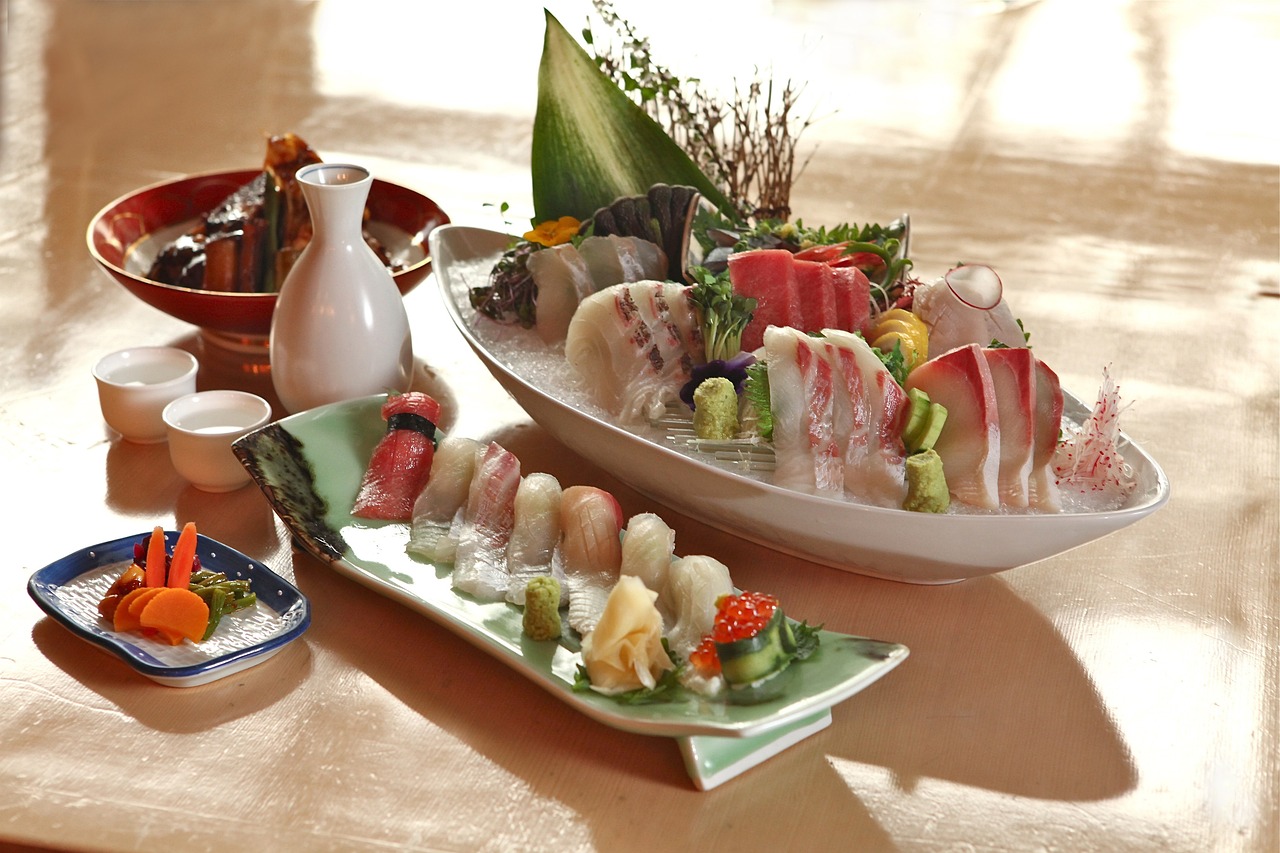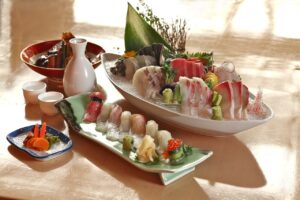Thrilled about your upcoming trip to Japan? Curious about the diverse culinary landscape beyond sushi and ramen? This comprehensive guide will walk you through the essentials of Japanese cuisine, highlighting popular dishes that are perfect for first-time visitors.
By the end of this article, you will:
- Gain a solid understanding of the fundamental structure and unique characteristics of Japanese cuisine.
- Rediscover the allure of teishoku (set meals), donburi (rice bowls), noodles, sushi, tempura, yakitori, and curry.
- Deepen your appreciation for Japanese food by comparing it with other culinary traditions.
- Confidently navigate the Japanese food scene and make informed choices during your trip!
Let’s set off on a delightful culinary journey through Japan!
1. First Things First: Understanding the Basics of Japanese Cuisine
Japanese cuisine is more than just a way to satisfy hunger. It’s a profound culinary culture that emphasizes nutritional balance, harmony of flavors, seasonal ingredients, and aesthetic presentation.
The Foundation of Japanese Meals: Ichiju-Sansai
The cornerstone of Japanese cuisine is the concept of “ichiju-sansai,” which translates to “one soup, three dishes.” This traditional meal structure typically consists of a bowl of rice, a bowl of soup, one main dish, and two side dishes. It offers a well-balanced and fulfilling meal with a variety of ingredients and cooking methods.
Characteristics of Japanese Cuisine
- Nutritional balance: The combination of rice, soup, a main dish, and side dishes ensures a balanced intake of various nutrients, including carbohydrates, proteins, vitamins, and minerals.
- Harmony of flavors: Japanese cuisine masterfully blends five basic tastes—sweetness, saltiness, sourness, bitterness, and umami—to create complex and satisfying flavors.
- Seasonal ingredients: By prioritizing ingredients that are in season, Japanese cuisine allows you to experience the unique and freshest flavors of each time of year.
- Visual appeal: Many Japanese dishes are not only delicious but also visually stunning, featuring vibrant colors and meticulous presentation.
Comparison with Other Cuisines
- Difference from Western cuisine: Western cuisine often features courses served sequentially, while Japanese cuisine, with its ichiju-sansai style, presents a variety of dishes to be enjoyed simultaneously.
- Difference from other Asian cuisines: In many Asian countries, meals typically center around rice or noodles as the main staple, accompanied by a few side dishes. Japanese cuisine distinguishes itself by offering soup and multiple side dishes in addition to the main staple.
2. Must-Try Popular Japanese Dishes
Sushi: A Globally Beloved Japanese Icon
Sushi, consisting of vinegared rice topped with seafood, vegetables, or other ingredients, is a bite-sized delight offering a diverse range of flavors. Its popularity extends far beyond Japan’s borders, making it a must-try dish for any visitor.
- Nigiri-zushi: Hand-pressed sushi, where skilled chefs expertly shape the rice and top it with a piece of seafood or other ingredients. The balance between the neta (topping) and shari (rice) is crucial.
- Maki-zushi: These are sushi rolls made with seaweed (nori) or egg omelet, encasing vinegared rice and various fillings. Enjoy the diverse combinations of ingredients.
- Chirashi-zushi: This colorful bowl of sushi features vinegared rice topped with an assortment of ingredients. It’s visually appealing and offers a delightful mix of flavors and textures.
While raw fish is less common in Western cuisine, Japan’s access to fresh seafood allows for the enjoyment of raw fish delicacies. Sushi is also popular in other Asian countries, but Japanese sushi stands out due to the masterful craftsmanship of sushi chefs and the emphasis on using fresh, high-quality ingredients.
Tempura: A Crispy Harmony of Batter and Ingredients
Tempura involves coating seafood or vegetables in batter and deep-frying them. Its light and crispy texture allows the natural flavors of the ingredients to shine through.
- Ebi-ten (Shrimp Tempura): Plump and succulent shrimp tempura, a classic and beloved choice.
- Kakiage: A tempura fritter made with a mix of finely chopped seafood and vegetables, offering a delightful variety of textures.
- Yasai Tempura (Vegetable Tempura): Tempura made with seasonal vegetables, allowing you to savor their natural sweetness and subtle bitterness.
Western-style fried foods often have a thicker, heavier batter and can be quite oily. In contrast, tempura boasts a thin, light batter that results in a crispier and less greasy texture. While other Asian countries also have their own versions of fried dishes, the delicate flavors of tempura are uniquely Japanese.
Yakitori: A Staple at Izakayas, Perfect for Sharing
Yakitori consists of bite-sized pieces of chicken, skewered and grilled over charcoal. It’s a popular menu item at izakayas (Japanese pubs) and is best enjoyed shared with friends.
- Momo (Chicken Thigh): Yakitori made with juicy and flavorful chicken thigh meat.
- Negima (Chicken and Leek): Skewers alternating between chicken and leek, with the leek’s aroma adding a delightful touch.
- Tsukune (Chicken Meatballs): Minced chicken formed into meatballs, seasoned with tare sauce or salt, and grilled to a tender and fluffy texture.
- Reba (Chicken Liver): Yakitori made with chicken liver, offering a rich and distinctive flavor.
Western-style barbecue often involves grilling large cuts of meat, while yakitori’s bite-sized pieces allow you to sample various parts of the chicken. Although other Asian countries have their own versions of skewered meats, Japanese yakitori is characterized by its simple seasoning of tare sauce or salt, which accentuates the natural flavors of the ingredients.
Curry Rice: Japan’s Comfort Food, A Taste of Home
Curry rice is a beloved dish in Japan, where curry is served over rice. It’s a common household meal and has become a national favorite.
- Beef Curry: Curry made with beef. The slow-cooked beef becomes tender and melts in your mouth, creating a rich and flavorful curry.
- Chicken Curry: Curry made with chicken. The chicken’s umami infuses the curry, making it incredibly satisfying and perfect with rice.
- Vegetable Curry: Curry featuring a variety of vegetables. Enjoy the natural sweetness and umami of the vegetables in this hearty dish.
Indian curry tends to be spicier and more complex in flavor, while Japanese curry is known for its mild and mellow taste. Japanese curry also offers a wide range of variations depending on the household or restaurant, allowing you to discover your own favorite.
3. Other Recommended Dishes
- Ramen: Japan offers a diverse array of ramen, with variations depending on the region. From tonkotsu ramen (pork bone broth) to miso ramen and shoyu ramen, embark on a quest to find your perfect bowl.
- Okonomiyaki: This savory pancake is made with a wheat flour batter mixed with cabbage, pork, and other ingredients, cooked on a tabletop grill. It’s a fun and interactive dining experience, perfect for sharing.
- Gyoza: These dumplings filled with pork and vegetables come in various forms, including pan-fried (yaki-gyoza) and boiled (sui-gyoza). They pair exceptionally well with beer.
Conclusion
This article has provided a comprehensive guide to popular Japanese dishes like sushi, tempura, yakitori, and curry, in addition to the basics of Japanese cuisine, perfect for first-time visitors.
These dishes offer a glimpse into the diversity, depth, and allure of Japanese food. Use this article as your culinary compass and embark on a delightful gastronomic adventure during your trip to Japan!
Now, let’s set off on a delicious journey into the world of Japanese cuisine!


